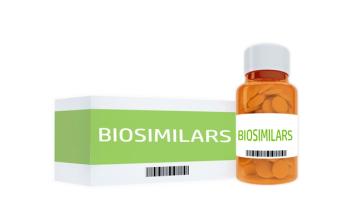A new product launch represents one of the most important initiatives a company will execute, culminating with years of research and planning. Product launch is a relatively important moment in a brand’s life cycle. However, the importance of that moment in terms of the level of investment, the product's fate, and the company's success cannot be overstated. A recent study found that outstanding launch performance is rare, and consistently high performance across markets is even rarer, suggesting gaps in launch strategy that companies can’t afford to ignore. But identifying those gaps and, even more importantly, ways to close them, can be tricky. Without a solid, empirical understanding of the key determinants of success, companies may approach this crucial moment blindly, wasting resources and missing opportunities. Given that companies spend an average of $800 million to develop and launch a new product, it’s no wonder that pharmaceutical companies’ success turns not only on the quality of R&D pipelines, but also on the rapid uptake of their brands. Still, predictors of successful launches have, until now, been illusory. There have been anecdotes, but no evidence-based approaches to launch excellence. The window of opportunity for launch is short and unforgiving, and the success depends on flawless execution of launch activity across countries and functions.
Main Takeaways
- The product launch phase is a key moment that determines that success of any new drug or treatment.
- Despite this, many companies struggle to appropriately plan for this stage.
- Advances in data analytics, artificial intelligence (AI), digital health, and evolving market dynamics can provide more accurate simulated pre-launch models.
As the pharmaceutical industry faces unprecedented challenges and opportunities in 2025, the need for accurate, actionable pre-launch market evaluation has never been greater. This article revisits and modernizes the concept, integrating advances in data analytics, artificial intelligence (AI), digital health, and evolving market dynamics. We examine how simulated pre-launch market evaluation models are being adapted for today’s complex, data-rich, and highly regulated pharmaceutical environment, and how these models are critical for successful product launches, resource allocation, and competitive strategy.
The Evolving Pharmaceutical Landscape
Key Market Forces in 2025
Several converging trends shape the pharmaceutical industry in 2025:
- Shorter patent protection and rapid generic entry continue to erode the market share of branded drugs, increasing the pressure to maximize the value of new launches
- Personalized medicine and digital health are redefining the patient journey, requiring more nuanced market segmentation and targeting strategies
- AI and advanced analytics transform R&D, marketing, and market access, enabling more profound insights and faster, more precise decision-making
- Regulatory changes and pricing pressure are intensifying, with gross-to-net erosion and health policy shifts demanding more robust forecasting and scenario planning
- Globalization and health equity are now central to launch strategies, as companies seek to address diverse patient populations and expand beyond traditional markets
The Original Old Model
- Mimic the physician prescription choice process by integrating patient, physician, and marketing variables.
- Forecast market share and inform marketing strategy before product launch.
- Use hierarchical Bayesian models to capture physician heterogeneity and generate actionable insights at the aggregate and individual levels.
This approach provided a structured, data-driven method for anticipating launch performance and optimizing marketing tactics, particularly in environments where test marketing was not feasible due to regulatory constraints.
Why Patient Simulation Remains Relevant
Despite technological advances, the core challenges persist:
- High risk and cost of drug development: The average cost and time to bring a new drug to market continue to rise, with only a small fraction achieving commercial success
- Complex decision-making: Prescription decisions involve multiple stakeholders (physicians, patients, payers, pharmacists), each influenced by clinical, economic, and behavioral factors
- Dynamic competition: The rapid introduction of new therapies and generics requires agile, evidence-based launch and defense strategies.
Modernizing the Patient Simulation Model
Integration of Real-World Data and AI
In 2025, patient simulation models will have evolved to leverage:
- Real-world data (RWD) from electronic health records, claims, and patient registries to build more representative patient profiles and simulate realistic treatment scenarios
- AI/ML algorithms to predict physician behavior, optimize patient segmentation, and run complex “what-if” scenarios at scale
- Digital health data (wearables, mobile apps) to capture patient adherence, outcomes, and preferences, enriching the simulation inputs
Example: AI-driven simulation platforms can now dynamically adjust patient profiles and physician behaviors based on live data feeds. This allows for continuous scenario testing as new information emerges during late-stage clinical trials or regulatory review.
Enhanced Stakeholder Modeling
Modern simulations account for:
- Payer and policy dynamics: Incorporating formulary restrictions, reimbursement policies, and value-based contracting into the simulated environment
- Patient empowerment: Factoring in direct-to-patient marketing, digital engagement, and patient advocacy trends, which increasingly influence prescription choices
- Global market heterogeneity: Modeling differences in practice patterns, regulatory environments, and patient demographics across regions
Advanced Analytical Frameworks
- Hierarchical Bayesian models remain central but are now supplemented by machine learning methods for pattern recognition and prediction.
- Scenario planning tools allow teams to simulate the impact of competitive launches, pricing changes, and market access barriers in real-time.
- Integration with commercial analytics platforms (e.g., Veeva, IQVIA) enables seamless data flow from simulation to launch execution
The Patient Simulation Workflow in 2025
1. Market Landscape Assessment
- Data-driven segmentation: Identify key patient populations, prescriber bases, and geographic opportunities up to two years before launch
- KOL engagement: Map and engage key opinion leaders to validate patient profiles and treatment pathways.
2. Patient and Physician Profile Generation
- Synthetic patient cohorts: Use RWD and AI to generate representative, diverse patient profiles reflecting real-world complexity
- Physician segmentation: Cluster physicians by specialty, prescribing behavior, digital engagement, and openness to innovation.
3. Simulation Design
- Multi-arm scenarios: Test various combinations of product positioning, pricing, detailing, and digital interventions.
- Incorporate payer and policy variables: Model the impact of different formulary scenarios and reimbursement levels.
4. Execution and Analysis
- AI-driven simulation engines: Run thousands of simulated launch scenarios, capturing granular physician-patient interactions and market responses.
- Outcome metrics: Forecast market share, identify early adopters, estimate sources of share gain/loss, and quantify the impact of marketing levers.
5. Strategy Optimization
- Targeting and segmentation: Identify high-value physician and patient segments for tailored marketing and sales efforts.
- Resource allocation: Optimize detailing, sampling, and digital marketing spend based on simulated ROI.
- Defensive strategies: For incumbents, simulate competitive responses and develop counter-detailing or pricing tactics.
Case Example: Launching a Novel Oral Biologic in 2025
Scenario: A mid-sized biopharma is preparing to launch an oral biologic for rheumatoid arthritis, targeting specialist and primary care physicians.
Simulation Steps:
- Patient Profile Generation: Use claims and EHR data to create synthetic cohorts reflecting age, comorbidities, prior therapy, and insurance status.
- Physician Segmentation: Identify rheumatologists with high biologic prescribing rates and primary care physicians managing early-stage RA.
- Scenario Testing: Simulate uptake under various pricing, access, and DTC marketing strategies, factoring in potential payer restrictions and competitor responses.
- Outcome Analysis: Forecast initial market share, identify key sources of share (e.g., switches from injectables), and estimate the impact of digital adherence programs.
- Optimization: Adjust launch plan to focus on high-potential segments, allocate more resources to digital engagement, and prepare counter-detailing for anticipated competitor pushback.
Result: The simulation identifies that early adoption will be strongest among digitally engaged rheumatologists in urban centers, and that payer access hurdles will be the primary barrier to broader uptake. The company reallocates resources accordingly, accelerating digital campaigns and negotiating early access agreements with major payers.
The Role of Simulation in Market Access and Value Demonstration
Market Access Challenges
- Gross-to-net erosion and increasing payer scrutiny require robust evidence of value and real-world effectiveness
- Digital health tools are now integral to patient support, adherence, and outcome measurement, and must be factored into launch simulations
Simulation Applications
- Value-based contracting: Simulate the impact of different outcomes-based payment models on adoption and profitability.
- Health equity analysis: Model uptake and outcomes across diverse patient populations to support access and reimbursement in global markets
- Regulatory scenario planning: Develop test launch strategies for varying regulatory and policy environments, including accelerated approval pathways and post-marketing commitments.
Impact on Simulation Models
Enables real-time, adaptive scenario testing and deeper insights
Digital health and DTP models
Requires modeling of patient-driven demand and engagement
Necessitates region-specific simulations and strategy
Demand modeling of diverse patient outcomes and access
HPAPIs and novel modalities
Increases the complexity of physician decision-making and market dynamics
Remote/virtual engagement
Shifts the marketing mix, requiring new simulation parameters
Market Size and Growth: Simulation Technology in Pharma
- The global medical simulation market is expected to reach $8.57 billion by 2033, growing at a CAGR of 15.6%
- Patient simulation software is projected to expand at a CAGR of 8.3% from 2025 to 2032, driven by AI integration, demand for patient safety, and cost containment
- High-fidelity simulation models and virtual patient platforms are becoming standard in both R&D and commercial functions
Challenges and Considerations
Data Quality and Privacy
- Ensuring high-quality, privacy-safe data is essential for simulation accuracy and compliance with global regulations
Physician and Patient Behavior
- Models must account for evolving physician attitudes, patient empowerment, and the influence of digital health tools on decision-making
Integration with Commercial Operations
- Simulation outputs must be actionable and integrated into CRM, marketing automation, and sales force platforms for real-world impact
Validation and Calibration
- Continuous validation against real-world launch data is necessary to refine models and improve future forecasting accuracy
Conclusion: The Strategic Imperative for Simulation in Pharma Launch Excellence
In 2025, simulated pre-launch market evaluation models are indispensable tools for pharmaceutical companies seeking to de-risk launches, optimize resource allocation, and outmaneuver competitors. These models provide a robust, adaptive framework for understanding complex market dynamics and stakeholder behaviors by integrating real-world data, AI, and advanced analytics.
Pharmaceutical leaders who invest in next-generation simulation capabilities will be better positioned to:
- Achieve launch excellence in an increasingly crowded and complex marketplace.
- Personalize strategies for diverse physician and patient segments.
- Anticipate and respond to competitive and regulatory shifts with agility.
- Demonstrate value to payers, providers, and patients, supporting sustainable growth.
In the digital health and data-driven decision-making era, patient simulation is not just a forecasting tool but a strategic imperative for pharmaceutical innovation and commercial success.
Disclaimer: The views expressed in the article are those of the authors and not of the organizations they represent.
Partha Anbil is at the intersection of the Life Sciences industry and Data & Analytics, including genAI/ML/NLP. He is a Senior Advisor to NextGen Invent Corporation, NY, an AI, Data Analytics, and digital transformation company.
Kamini Anbil is an experienced consultant in the Life Sciences industry. She spent 6 years with ZS Associates, a top boutique global management consulting and technology firm specializing in the Life Sciences sector. Previously, she worked at Covance Market Access Services (now Fortrea), a contract research organization that provides consulting services in Life Sciences market access and healthcare policy.





